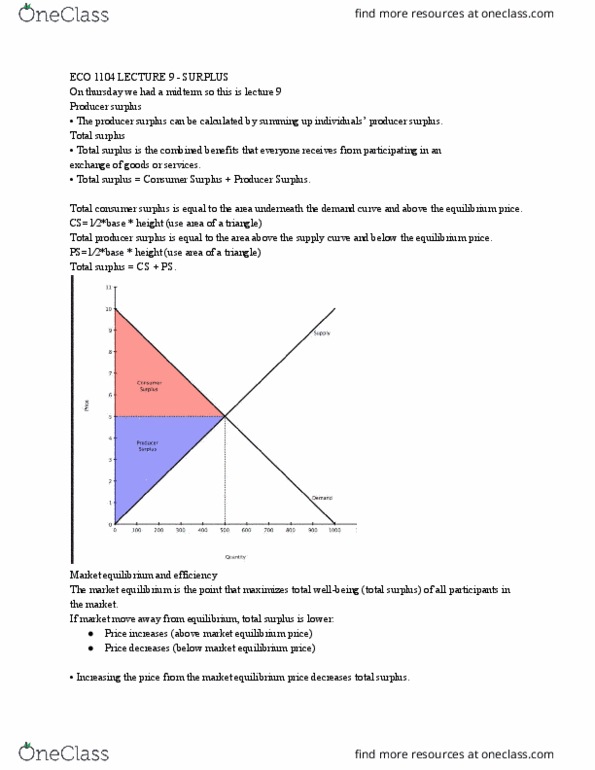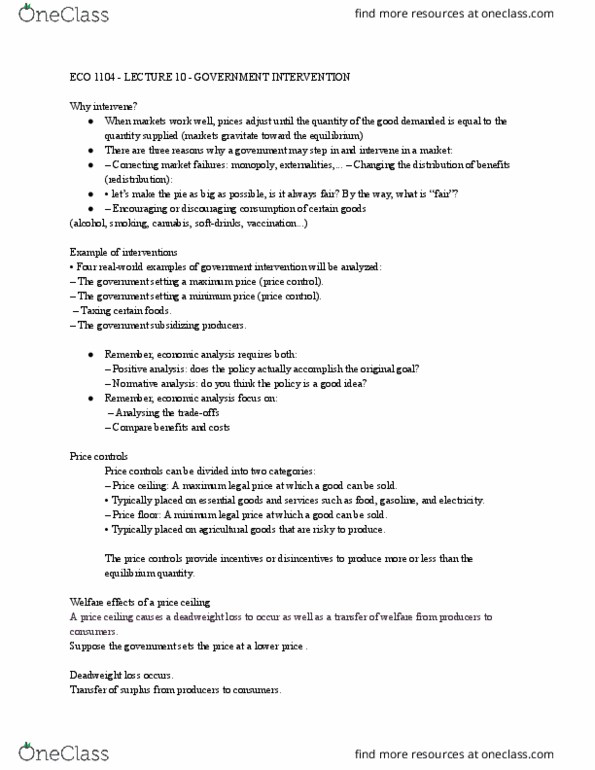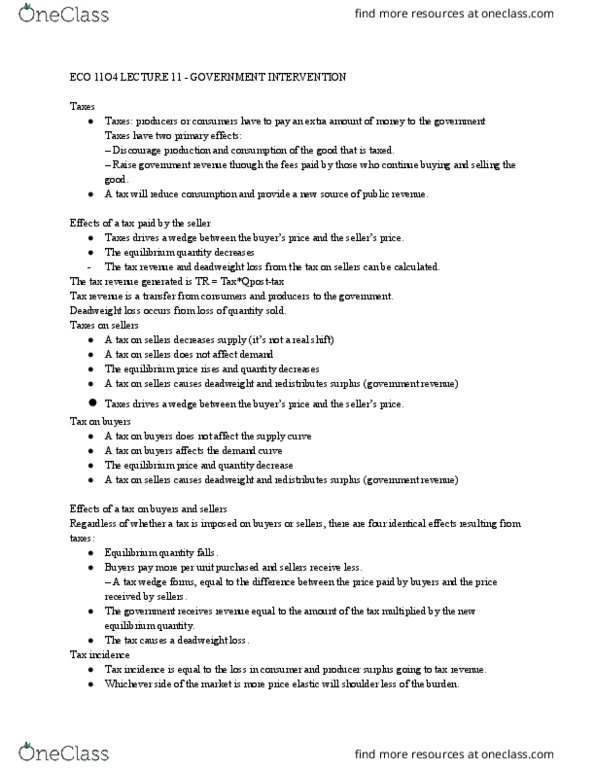ECO 1104 Lecture Notes - Lecture 10: Deadweight Loss, Price Ceiling, Economic Equilibrium
ECO 1104 verified notes
10/11View all
Document Summary
Eco 1104 - lecture 10 - government intervention. When markets work well, prices adjust until the quantity of the good demanded is equal to the quantity supplied (markets gravitate toward the equilibrium) There are three reasons why a government may step in and intervene in a market: Correcting market failures: monopoly, externalities, changing the distribution of benefits (redistribution): Encouraging or discouraging consumption of certain goods (alcohol, smoking, cannabis, soft-drinks, vaccination) Example of interventions: four real-world examples of government intervention will be analyzed: The government setting a maximum price (price control). The government setting a minimum price (price control). Price controls can be divided into two categories: Price ceiling: a maximum legal price at which a good can be sold: typically placed on essential goods and services such as food, gasoline, and electricity. Price floor: a minimum legal price at which a good can be sold: typically placed on agricultural goods that are risky to produce.




